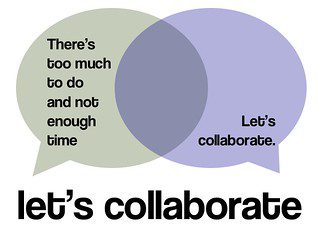Can there be such a thing as "too much collaboration"?
Collaboration is one of those words that is often taken as being overwhelmingly positive, and something everyone should do. But is it?
With the exception of France, where a “collaborateur” is still a dirty word, the concept of collaboration is usually seen as a very good thing. When people cooperate and collaborate across borders and organisational divisions, we expect good things to happen.
But as with most generalisations, this is only partially correct.
I have already reported how Haas and Hansen, in a study of a large services firm, identified cases where collaboration helps, and other cases where collaboration hinders success. Not all collaboration is good – some of it is a waste of time or creator of unneeded confusion. As this blog suggests – we need enough collaboration – neither too much nor too little, and collaboration may have become a fad.
Cross et al suggest ways in which this issue can be addressed; once the overloaded collaborators are identified, you can either give them ways to filter out, or shut off, requests for help, you can use redesigned office space and/or collaboration tools to make collaboration less of a burden, you can spread the load, and you can look for ways to reward collaboration in the reauired areas.
There is another way as well.
If
- 3% of the staff are in huge demand as collaboration agents, and
- their collaboration efforts are adding value to others, and
- this value outweighs the value of their own work (which it may well might, but you need to check)
Tags: Archive


Leave a Reply